
THE SUSSEX MOTIVE POWER DEPOTS WEBSITE.
HAS NOW BEEN MOVED TO A NEW SITE CALLED
IGNITING THE FLAMING OF UNITY
https://ignitingtheflameofunity.yolasite.com/
PLEASE CLICK ON THE IMAGE BELOW
TO TRANSFER TO THIS NEW SITE
CLICK ON THE ABOVE IMAGE TO TAKE YOU
TO THE NEW UPDATED COMBINED AND WEBSITE
IGNITING THE FLAME OF UNITY WEBSITE
https://ignitingtheflameofunity.yolasite.com/
THIS WEBSITE COMBINES THE FOLLOWING WEBSITES
THE BRIGHTON A.S.L.E.&F., THE BRIGHTON MOTIVE POWER DEPOTS
& THE SUSSEX MOTIVE POWER WEBSITES
WHICH EXPLAINS THE EVOLUTION OF THE FOOTPLATE GRADES AND THE
HISTORY OF THEIR TRADE UNIONS AND THE STRUGGLES TO IMPROVE
THEIR WORKING LIVES
CLICK ON THE ABOVE IMAGE TO TAKE YOU
TO THE NEW UPDATED COMBINED AND WEBSITE
IGNITING THE FLAME OF UNITY WEBSITE
https://ignitingtheflameofunity.yolasite.com/
THIS WEBSITE COMBINES THE FOLLOWING WEBSITES
THE BRIGHTON A.S.L.E.&F., THE BRIGHTON MOTIVE POWER DEPOTS
& THE SUSSEX MOTIVE POWER WEBSITES
WHICH EXPLAINS THE EVOLUTION OF THE FOOTPLATE GRADES AND THE
HISTORY OF THEIR TRADE UNIONS AND THE STRUGGLES TO IMPROVE
THEIR WORKING LIVES
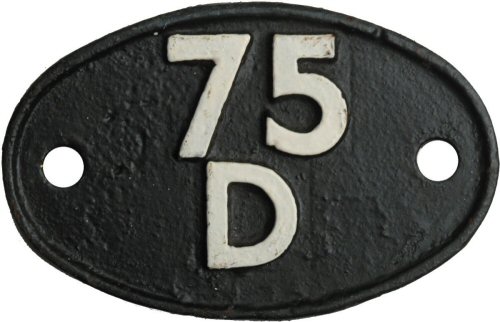
BOGNOR
This web page is dedicated to all A.S.L.E.&F. members who have worked at Bognor
depot over the years, and it features A.S.L.E.&F. members who brought the trains of
Bognor to life.
I am trying to find out the names of the A.S.L.E.F. Branch Secretaries for the Bognor Branch and the dates they
served between. if you have any info please can you let me know.
W. Lawrence c1930
Engineman James Alfred Funnell
Below is the a presentation made to James Alfred Funnell, with an inscription that reads
Present to James Alfred Funnell, by the Directors of the Southern Railway Company, in recognition of his courageous action in saving a colleague from serious injury at Bognor. 31st March
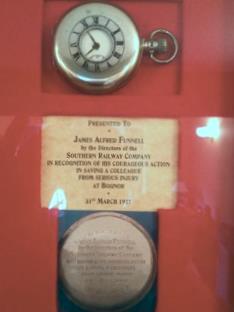
Neal Cowdrey as found out the following information regarding James Alfred Funnell.
According the LB&SCR staff records with a J.A. Funnell, but no reason for the award. Looks like he was born
12/12/1905 (his date of birth was 12/10/1905), and possibly entered service as a cleaner at Bognor, pay rises as a
cleaner on birthdays in 1923 and 1925., and at Littlehampton in 1925.
On Jan 30 1928 there is a J. Funnell transferred from Bognor to Tunbridge Wells as a shed labourer. There is no date
of birth or pay number to tie this one to J.A. Funnell, but it is a possibility.
The records appear to be mainly related to changes to rates of pay and not neccassarily promotion (or demotion). I
have scanned through the pages from 1925 to the middle of 1927 and can't find the transfer to Littlehampton, or any
transfer back to Bognor.
I have no other sources that indicate an incident at Bognor. By the mid-1930s he had left the railway, and was driving
the steam roller for Bognor Council.
Bognor Regis’s locomotive shed was opened on the 1st June 1864 by the L.B.S.C.R. (Shed Code Bog).
The locomotive shed (75Ds) closed on 8th November 1962.
With the electrification arriving in Bognor Regis on 22nd May 1938, this created a new motorman’s depot at
Bognor Regis (E.M.U.T.) which opened in 1938.
In 1995 Bognor Regis Depot closed and the drivers transferred to the newly opened Barnham depot.
Bognor A.S.L.E.&F. members had not formed their own Branch until some time after 1912. In June 1912, they were
still part of the Horsham Branch.
The Bognor Regis Branch of A.S.L.E.&F. was opened in pre 1925 and closed in 1995.
It is thought that the Branch was opened after the formation of the Motorman's depot at Bognor Regis.
Prior to this Bognor A.S.L.E.&F. members may have been members of the Littlehampton Branch
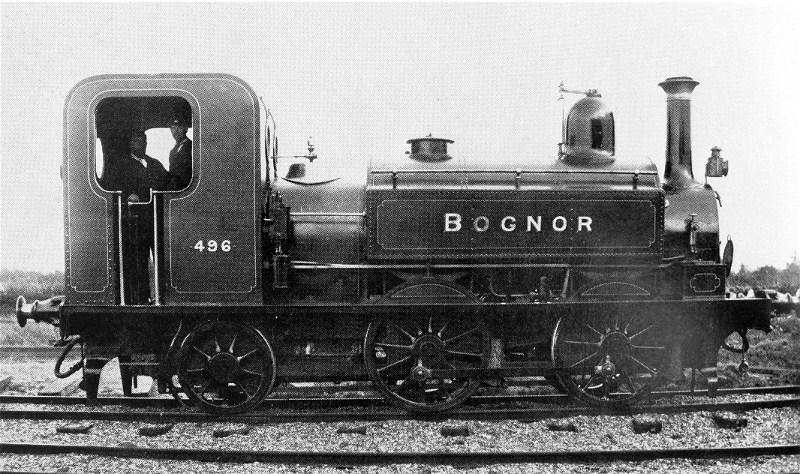
PHOTOGRAPHER UNKNOWN
Bognor Regis second Loco Shed 1903 ~ 1953.
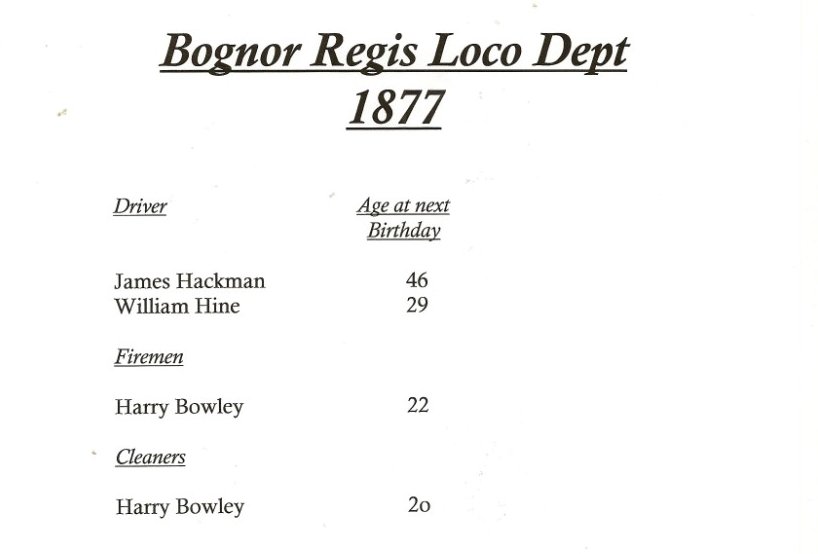
Above is a list of all the engine men that where employed at Bognor Locomotive Department in 1877. It is not know if this is list was compiled in seniority order or not. However, the list does clearly indicates the difference in the ages of both drivers & fireman at that period of time.
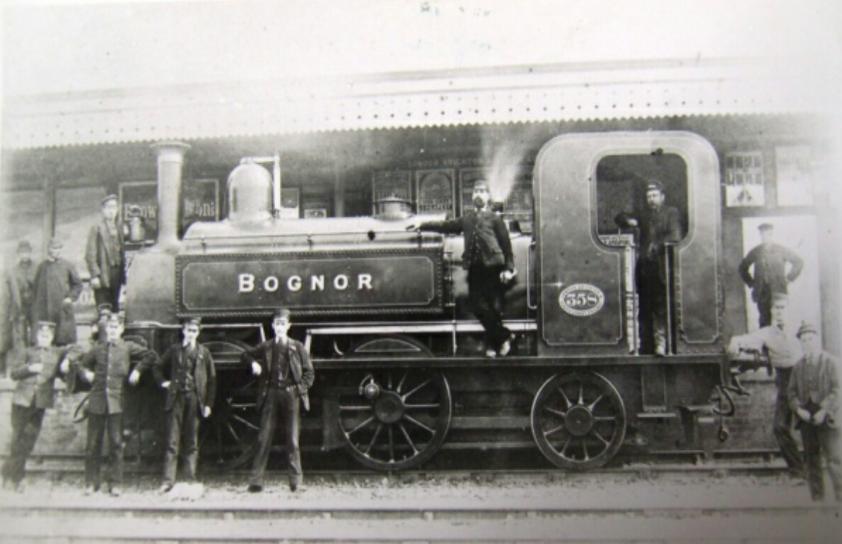
PHOTOGRAPHER UNKNOWN
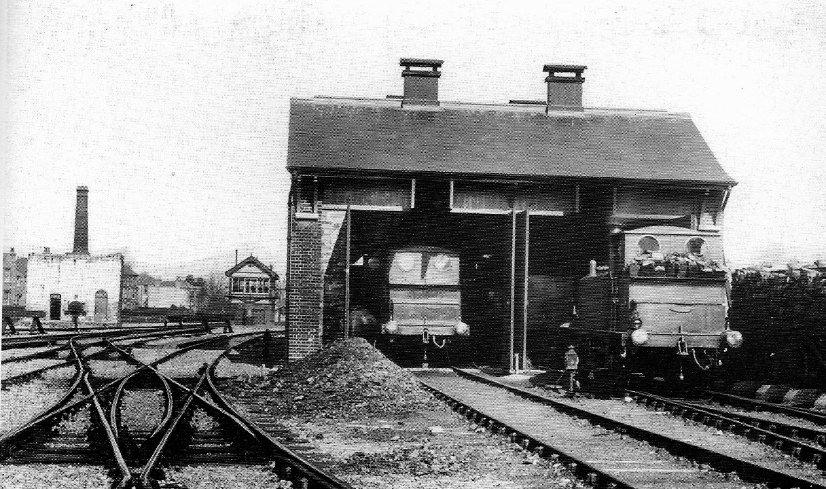
PHOTOGRAPHER UNKNOWN
Bognor Regis second Loco Shed 1903 ~ 1953.
LOCOMOTIVE WORKING ON SUSSEX BRANCH LINES 1902
EXTRACTED AND ADAPTED THE JOHN PELHAM MAINLAND
FROM RAILWAY MAGAZINE FEBRUARY 1902
At the beginning of the century, the working of the locomotive depots at Littlehampton, Bognor, and Midhurst exhibit
many interesting features directly traceable to mid -Victorian practice. These depots were included in the Horsham
Locomotive District; Midhurst and Littlehampton had four engines each, and Bognor two engines. At least one engine
at each shed was designates the “Branch Engine,” a relic of the practice established by John Chester Craven,
Locomotive Superintendent of the L.B.S.C.R. from 1852 to 1869.
The Locomotive Foreman at Horsham made a tour of his District on the last Wednesday of each month. Leaving
Horsham at 10.20 a.m. the circuit of inspection occupied no less than 7 1/2 hours, unless as sometimes happened,
Bognor was omitted on a verbal assurance being given by the fitter in charge at Littlehampton that “they were all
right there”; this reduced the time by 2 1/2 hours.
The choice of the day was a relic of the past; it had been originated with an old instruction which held the foreman
personally responsible for certifying that the reserve coal stack had not vanished in whole or in part, and that the oil
stock was according to the books, and had not been diverted to other purposes. Occasionally, on the second
Wednesday of the month, the foreman paid a visit to Littlehampton only, but this was an exceptional measure of
supervision. The reason for the choice of Wednesday was that on this day the Outdoor Locomotive Superintendent
regularly visited the Chief Offices at London Bridge and therefore was not likely to descend upon Horsham, and find
the Foreman absent.
For all practical purposes the telephone was non-existent, the only means of communication, other than by rail-borne
letter, being the single needle telegraph, known as the “speaking instrument.”
The immediate responsibility for these out-depots therefore rested upon the man in charge of the shed, and sol on as
he was conscientious in the discharge of his in charge of the shed, and so long as he was conscientious in the
discharge of his duties, everything worked satisfactorily. The standard of locomotive maintenance at these depots
compared favourably with any other shed on the system, the mileage run between shop repairs averaging 65,000 in a
period of about 2 3/4 years. The general arrangements were primitive by modern standards, but were suited to the
conditions of railway working at that time.
Variations of the standard engine workings, as diagrammed, were confined to local adjustment at the time of the
annual revisions of the timetables, and at holiday times, when late running of the London - Portsmouth trains resulted
in unscheduled trips on the Bognor and Littlehampton branches. During the Goodwood Race period (the week before
the August Bank Holiday) some slight adjustments were made to the train service on the Midhurst branch.
PHOTOGRAPHER UNKNOWN
At Littlehampton, the fitter was in charge, and during the daytime he usually was to be found there, except on
Mondays and Wednesdays, when he visited Bognor and Midhurst respectively to carryout repairs to the engine
stationed there.Having but ten engines to look after (a small number for those days) the post was considered to be an
easy one, as it undoubtedly was if action was taken to forestall mechanical troubles.
The Bognor branch engine, a “Terrier” tank, was washed out regularly every Monday, the spare engine (another
“Terrier”) being used only on such occasions. The latter was generally a run-down specimen waiting it turn for
general repairs in the shops. On other days it reposed behind closed doors in the combined running shed and
pumping station, the site of which is now in the centre of the main tracks, approximately half-way between the end of
the platforms and the Bersted level crossing. Its isolation rendered a clandestine visit a matter of some difficulty, but a
persistent oral tradition records that marathon one enthusiast awaited in ambush the hour (about midday) when the
pump-man) adjourned to a certain establishment in the immediate vicinity (to wit, the “Richmond Arms”) to enter the
well guarded area and behold the rara avis ensconced therein. As the write confesses to having acted similarly at
Midhurst in 1901, he is prepared to accept the Bognor tradition as possessing at least, some foundation in fact.
The clearer worked, of course, at nights. He had to coal and light up the engine, as well as clean it, for the next day’s
work, which commenced with a light run to Barnham to “bring in the goods” from that station at about 6.30 a.m. The
last trip out and back left Bognor about 9.40 p.m., to connect with coastal services, after which the branch closed for
the night. The shed was in charge of a driver who worked early and late shift alternatively, but performed only about
7 1/2 hours as a driver, the balance of 2 1/2 hours being supposed to be devoted to administrative duties. The latter
mainly consisted in sending up to Horsham the drivers’ journals (total two) the records of the daily coal and oil issues
(about 30 c.w.t. and 4 pints respectively) and some other particulars of like character, all of which could easily be
discharged in about 20 minutes.
Of the three depots, Bognor was the most primitive and the most isolated, as there was no facing connection with the
main line at Barnham. The branch line was single, worked on the staff and ticket principle, the tickets only coming
into use on occasions in the summer when excursions mainly school treats arrived from a distance. These trains had,
of course, to shunt on and off the branch at Barnham. The enginemen and guards booked off and on again for the
return journey, unless there was any major defect on the engine, in which case it had to worked light to Brighton to
obtain another for the up trip. Strange to say, this procedure was of the rarest occurrence. It is not recorded what
happened if a Stroudley “Single” or a Class “B2” 4-4-0 showed signs of shortage of water in the boiler, but it is to be
presumed that the pump-man “made the necessary arrangements” as there was no one else to do so.
The replacement of the “Terrier” tanks by “D” Class 0-4-2s tanks on the regular Bognor branch line duties, however,
a “Terrier” continued to beheld occasionally for working that branch and to be held as a spare engine until 1919. It
was used occasionally for working that brach , and on the Littlehampton branch, when the necessity arose.
* John Pelham Maitland, was a Loco Foreman at Newhaven & Littlehampton loco sheds.
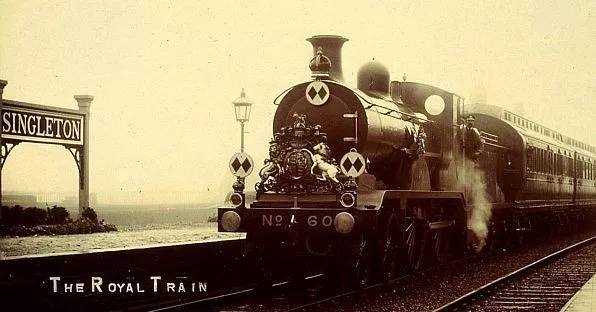
PHOTOGRAPHER UNKNOWN
Billinton class B4 No.60 ‘Kimberley’ with the Royal Train at Singleton,
c1906 conveying King Edward VII on a visit to West Dean House
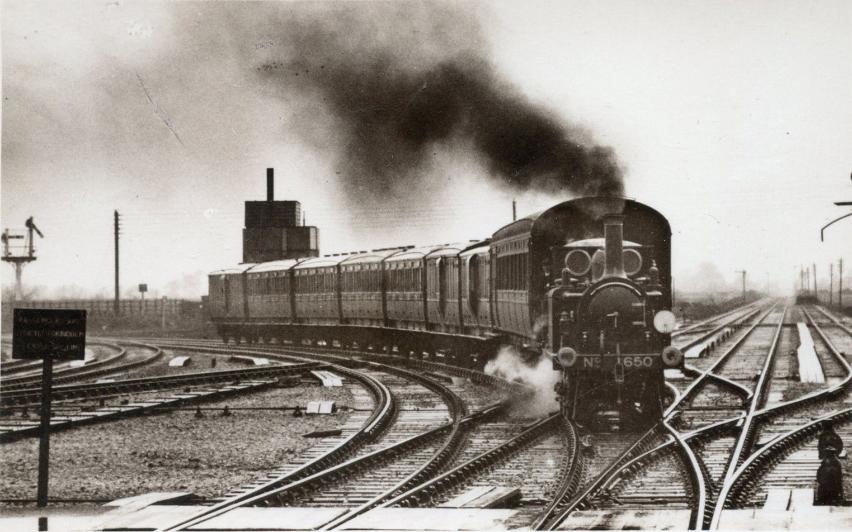
Above L.B.S.C.R Locomotive workings for October 1912
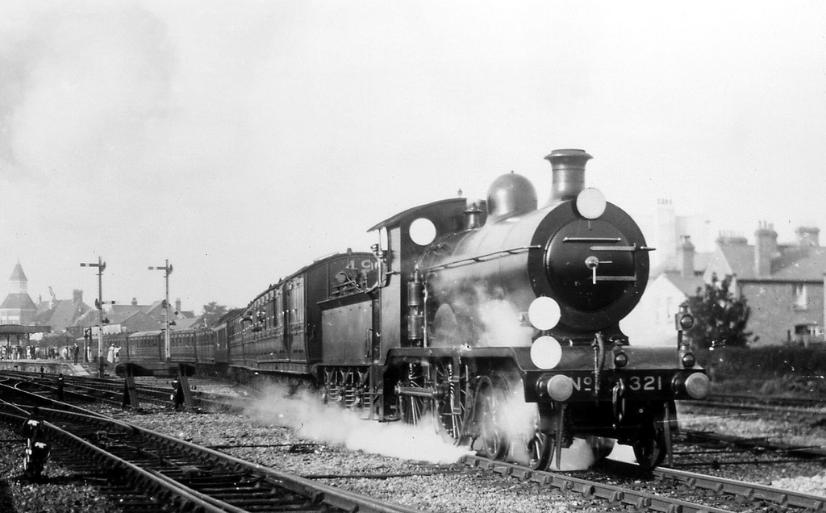
PHOTOGRAPHER UNKNOWN
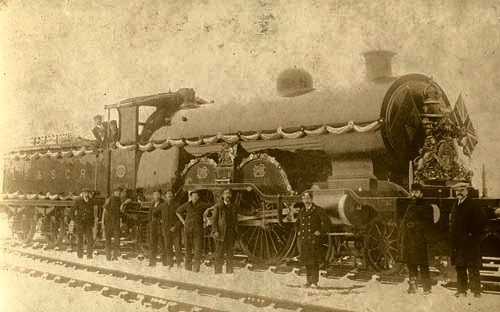
PHOTOGRAPHER UNKNOWN
BOGNOR FEBRUARY 1912
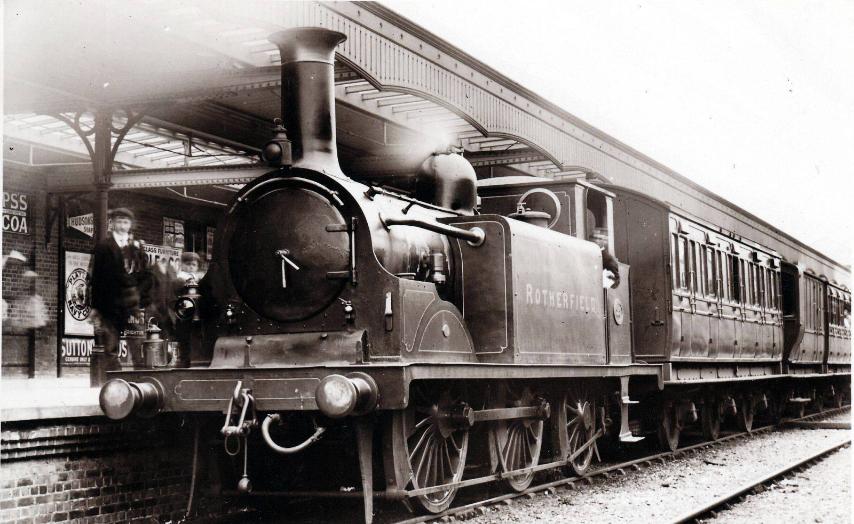
PHOTOGRAPHER UNKNOWN
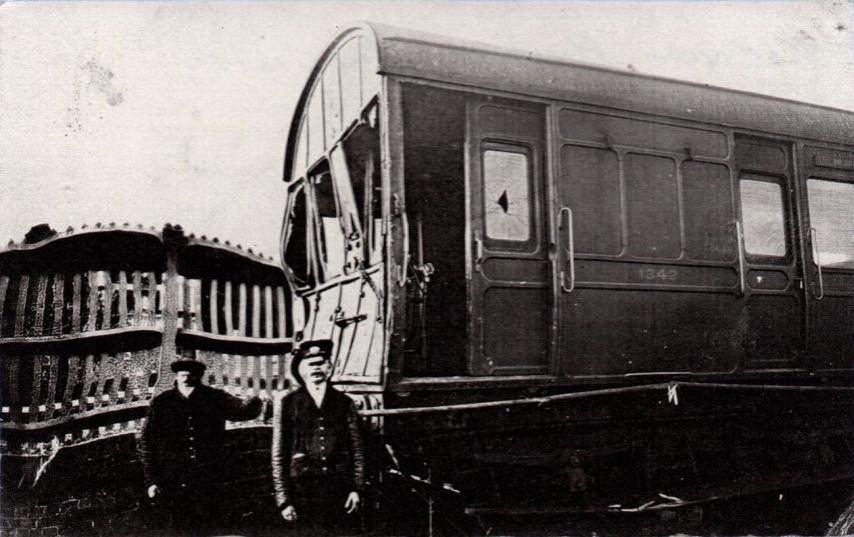
PHOTOGRAPHER UNKNOWN
A COLLISION AT BOGNOR SEPTEMBER 1913
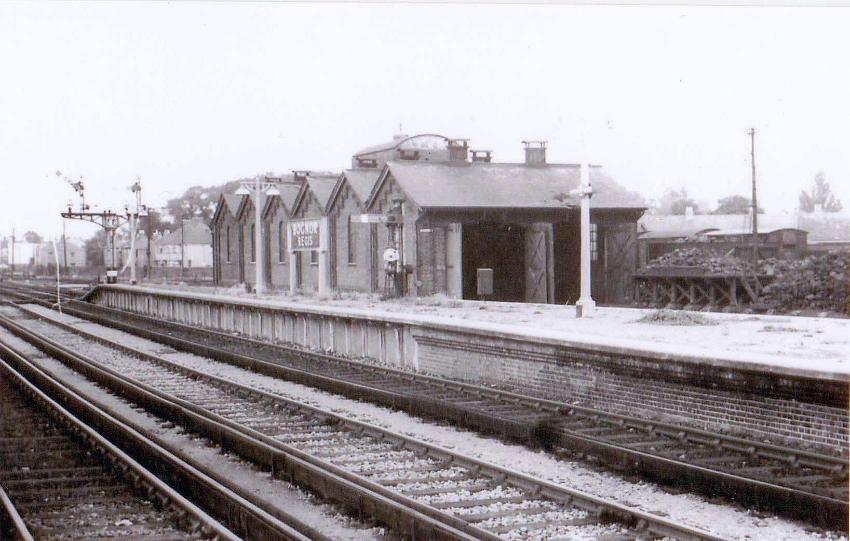
PHOTOGRAPHER UNKNOWN
LOCOMOTIVE JOURNAL
JANUARY 1926
BOGNOR BRANCH
It looks as if we shall require larger accommodation for our branch meetings. At our meeting on Sunday, November
29th, the spacious room which we at present possess was crowded out with enthusiastic members, at this depot we are
100 per cent. strong, and the only one or two waverers there are at our neighbouring depot have at last decided, I
think, to pay into the finest society regarding locomen’s interest. I am glad to see that the cleaners are waking up and
putting their grievances through the proper channels. I hope others will do likewise, and not sit and wait for their
fellow-members to do the fighting for them. The way to gain satisfaction is to attend their branch meetings and have
their say. In conclusion, I wish everybody a Happy New Year, and our Society a most prosperous one.
C.R.C.
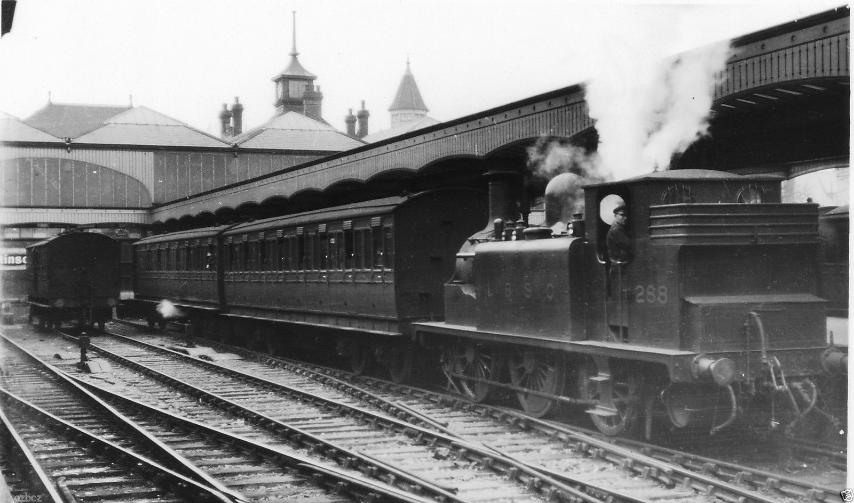
PHOTOGRAPHER UNKNOWN
LOCOMOTIVE JOURNAL
JUNE 1926
BOGNOR BRANCH
On March 28th a bumper meeting was held here, when a room was filled with enthusiastic members. I may say that
every meeting held at Bognor is packed out, and I venture to challenge any branch that could prove better attendance
at meetings. The branch is 100 per cent. strong, with 90 per cent. average attendance at meetings. We are looking
forward to the day when the Society is 100 per cent. strong. We are not very large here, but as firm as a rock. The 28th
will be long remembered by members, as we had the honour of having of her Ladyship, The Countess de Rivas, an
honorary member of the Portsmouth branch, paying us a visit, who kindly made the presentation to one of our staunch
old members, Thomas Woolnough, who has been 35 years a hard-working member of our Society, of a clock, and an
artistic piece of work executed by one of our members, Fireman A. May, in the shape of an illuminated emblem and
address, given by the branch in appreciation of our old g able to friend’s long membership. The presentation was very
pleasing to us all, and Bro. W. Porter moved a vote of thanks to her Ladyship for kindly making the presentation, also
to the clever artist in our midst, who must have spent hours on the wonderful piece of art. Her ladyship expressed her
pleasure in being able to perform the ceremony, and gave some very appropriate remarks to our old friend, Thomas
Woolnough, and to the meeting on the value of Trade Unionism. We also had the pleasure of Bro G. Godsell, of
Battersea, who gave us a few words, and urged the younger blood to wake up. He also was heartily received and
thanked, and so an excellent meeting came to a conclusion. I hope to read in future of other branches who can boast
of such meetings as we get.
DIGGER.
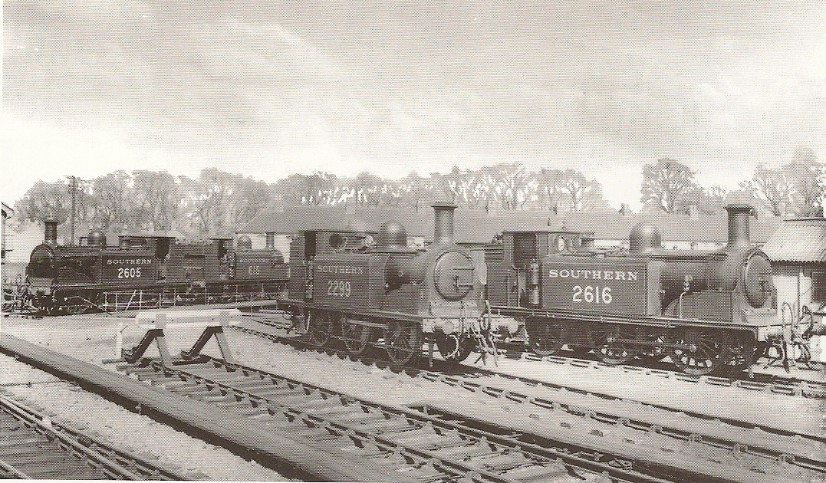
PHOTOGRAPHER UNKNOWN
Bognor Regis Loco as seen on Sunday 5th May 1934
LOCOMOTIVE JOURNAL
MAY 1929
BOGNOR AND LITTLEHAMPTON BRANCH
I would draw the attention of the “Bognor” members that our meeting night is Wednesday, at 7 p.m., every third week,
at the Terminus Hotel. During the years 1927-8 the uncomfortable branch-room was the reason given for small
attendances, but, I am prepared to wager that a room to surpass the above mentioned for comfort and homeliness
cannot be found. Having, therefore, surmounted the difficulty of an uncomfortable room, I am at a loss to understand
the reason for small attendances. During my annual holiday, I devoted three days to branch business by holding two
special open meetings and attending to L.D.C. matters. The attendances were very poor. If I were neglectful I should
expect such meetings, but I defy anybody to bring that charge. Complaints, grievances, and suggestions, have all gone
through their proper channels, almost as soon as receiving them. I’ve pretty well worn the carpet out in the “Loco.”
Office, trotting in and out. Therefore, I repeat: “why such meagre attendances?” Now, “Wake up,” Bognor, and let’s
hear your voices raised in the branch-room a little more often, instead of in the “lobby,” for surely two hours devoted
to branch matters is not a great sacrifice out of six weeks. A word of congratulation to the Littlehampton members on
the splendid attendance at the last two monthly meetings.
W. LAWRENCE, Branch Sec.
LOCOMOTIVE JOURNAL
MAY 1930
BOGNOR AND LITTLEHAMPTON BRANCH
I feel I must take an opportunity of expressing my thanks and appreciation to the members of the above for their
assistance and help during the year 1929, and for apparent confidence felt, by again electing me as you secretary and
shed committee representative, with Bro. H. Rogers. I think we can look back upon the last 12 months with a fair
amount of satisfaction, both from a membership point and an amicably working depot. Bro. Rogers will bear me out
when I say that some of our committee meetings, during 1929, were rather trying ordeals, from the point of view of
gaining a point (which was very rare) I must admit, and in some cases fighting to hold what we were just entitled to.
When the foreman (that was then) greeted me with the remark, “Well, Lawrence, what is it this time, as much as I like
you, I begin to hate the sight of you,” I think you’ll agree that it wasn’t exactly encouraging, but I will also admit that
I was rather flattered, for o think I must have been a sort of a nightmare to him, I honestly believe he meant it, too.
Anyway, I think we parted fairly friendly when he left us, so all’s well that ends rough. Well, now that we have entered
upon another year with a new foreman and naturally new ideas, which, providentially for us, have proved beneficial
to all, it’s up to us to look after them. Although I know there is no emphasize that point, I would like to lay stress upon
the importance attaching to the branch meetings. For that is the place for the discussing of your workings, that your
committee may go into conference with the knowledge that everybody approves of what is going to be done. Always
remember, that to look after your interests and maintain efficiency, you must be conversant with present happenings,
and to do that just spare that 2 hours one evening a month, and see and hear what’s doing. The attendances, of late,
have been fairly satisfactory, but there is still room for improvement, so we commence our meetings again I would like
those to this applies to bear it in mind.
Another point well worth mentioning applies to the “Arrears Link.” It is rather deplorable habit, makes more work
for me and a bit more for Head Office and will, one of these days, cause yourselves perhaps years of regret. You will
find occasion when assistance and representation would be a wonderful asset, but owing to your being “out of
benefit” you couldn’t get it, and don’t come to me with any expectation of sympathy, because you won’t get it, and I’ll
tell you why. If two and more share are preferred in the sweepstake, then let the sweepstake look after your future. I
wouldn’t mind so much if you parted up with a portion of it when you won, but you don’t, or won’t. I’m not by any
means condemning football sweeps, for I’ve got one share myself, but as soon as it interferes with my contributions,
then I’m quitting, before the sweepstake condemns me. Get that, do you? Just you think about it, and the explanation
won’t be hard to find.
Well, I won’t utilise anymore of our journal’s valuable space, and if all this is published I only hope and trust that
some good comes of it. I’ll write again when my contribution return book shows “no arrears.”
W. LAWRENCE,
Branch L.D.C. Secretary.
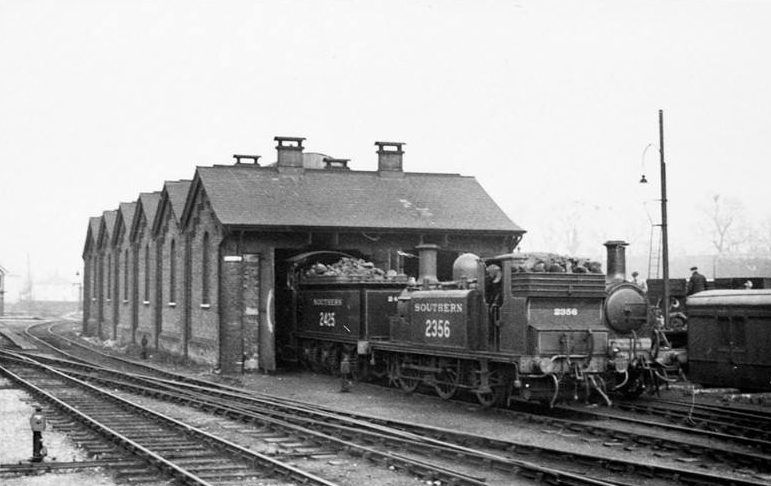
PHOTOGRAPHER UNKNOWN
LOCOMOTIVE JOURNAL
FEBRUARY 1931
BOGNOR AND LITTLEHAMPTON BRANCH
A few words from us I am sure will not come amiss. Firstly, a glance back over 1930, I believe gives us a satisfactory
reflection. Certainly one or two matters that were unforeseen I have no doubt will be remedied before overtaking us in
the New Year. Here I must mention that it Is a great asset to have a foreman who is always ready to listen to
reasonable suggestions for betterment of our working conditions, and furthermore will also assist in alleviating any
difficulties, sometimes, as I am aware, at a good deal of personal inconvenience; also, to have satisfaction expressed
for our carrying out allotted duties was, to say the least, surprising, but nevertheless greatly appreciated. We can do
no better than make 1931 even more successful, that is providing the companies leave well alone.
To enter into 1931, I must first of all express my appreciation of the apparent confidence shown in me again by
electing me as your secretary, and I take this opportunity of thanking one and all, and trust there will be no cause for
you to regret your choice. It is also well worth mentioning, that with the exception of one mot desiring re-election, all
other 1930 officers were returned unanimously. That in itself, I think, expresses a great deal. I would also
congratulate the members upon the way contributions were paid and several cases of arrears wiped off. These in
some cases, be it noted, before the Companies’ proposal were known. Judging from the present situation, I don’t think
the arrears for December will be much to talk about. Whilst broaching the subject of the companies’ suggestions that
are staring us in the face, I am relying upon this branch to respond to the “Stand to Arms” call, should it be necessary
to sound same. We, of course, are aware that our two slugs are awaiting the opportunity to still further deprive us of a
decent standard of living. It is pleasing to note that our E.C. have taken the time is not far distant when wedge will be
driven completely home. It is beyond understanding why men who call themselves “Trade Unionists” can find time to
associate with such scum. Furthermore, to listen to them and be influenced by what they say gets me groggy. Dirty,
low-down, sneak thieves, and yet some of you are afraid to treat them in the manner they should be treated-sooner go
and treat them to half-a-pint of beer. So would I? Still, it doesn’t seem to have much effect, it doesn’t seem to have
much effect. I’ve talked till I’m very nearly sick with talking, so I only hope the day isn’t very far distant when others
methods will deal with them. In conclusion, I would again remind certain members that our branch meetings are still
held at the Terminus Hotel, Bognor Regis and the Labour Hall Littlehampton. With fond hoped that the New Year will
be much brighter than present outlook affirms.
BRANCH SECRETARY
LOCOMOTIVE JOURNAL
APRIL 1931
BOGNOR BRANCH
February 8th marked the occassion of a very pleasant function, by the presentation of a nice chimney clock inscribed,
to the Host and Hostess of our branch-room. We had the pleasure of a visit from our Organizer, Bro. Barton Wild, to
perform this little ceremony, and naturally enough it was carried out in his usual manner. It may, perhaps, strike some
readers as a being a little out of the ordinary making presentations to hotel proprietors, so I would point out that the
greatest consideration and kindness has always been extended to us and not a penny in rent will be accepted. I think I
am right in saying that a good many railwaymen other than our locals know “Old Jim.” Bro. Wild remarked that this
was about the most unique presentation that he had made some hundreds. Firstly, he thanked these good people for
their kindness to this branch, and drew attention to the fact that had it not been for the like of such in days gone by
many a branch would have been stranded for a meeting-room, as they invariably came to rest at some hotel or other,
but he could not recollect another case of the landlord refusing to take any rent. I must also point out that in lieu of
the rent allowed by Head Office for branch-rooms, they kindly headed the list with that amount. Bro. Wild, following
the presentation, addressed the meeting on the current situation on the railways. Although the majority of us have
been following the reports very closely, we could not help but be amazed at the figures that Bro. Wild quoted and what
they actually meant when placed before us in such a lucid manner. It certainly leaves no doubt in our minds as to what
action we shall take should the companies’ proposals, or anything like them, be the final decision of the N. W. B. In
view of the information imparted to us, there must be no thought of a reduction, but rather must we continue to press
our claims to the fullest extent. I cannot but think of the effrontery of the companies to have come forward with
demands in face of figures, which are their own, as placed and explained before us. I would here suggest to all
branches that have not yet had someone down to put the matter in front of them as we have, to do so at the earliest
opportunity, and if there is anybody with weak knees afterwards, well they are not worth their salt. This meeting
unanimously rerecorded their decision to stand by any action that our E.C. may determine upon. Bro. Wild, of course,
touched upon the “Slugs” as we familiarly know them now, and strangely enough, his remarks coincided very nicely
with my version in a recent Journal. I was surprised to hear that a certain amount of annoyance was caused these
reptiles following those remarks. I say I am surprised, although somewhat gratified, for I did not imagine that
anything could penetrate their thick skins, other than the loss of the 50 per cent. Remarkable how they are always the
first to be aggrieved when they don’t get everything that we have fought and paid for. I am still longing for the time
when they won’t be entitled to it. I wonder when the companies will emerge from their trance, and realize the
economies they could effect on the articles? Anyway, we are getting off the road a bit. To revert back to our evening,
Bro. Wild concluded his remarks and replied to questions, and the meeting closed with a drink from our host and
hostess, who joined us and toasted “Our Health,” which was very heartily reciprocated.
W. LAWRENCE, Branch Secretary.
LOCOMOTIVE JOURNAL
OCTOBER 1931
BOGNOR BRANCH
Here we are again, not yet extinct, nor likely to be whilst our few live wires keep buzzing. Before commencing the
offensive, I express, on behalf of our branch, the deepest sympathy to our Bro. bill Childs in his irreplaceable loss by
the death, at so early an age, of his wife. His remarkably well know along the old Brighton section for a cheery
disposition, taking troubles, to all appearance, very lightly, and I have no doubt that he has the sympathy of many of
our comrades up and down the system.
The next item of interest will be the retiring of our branch chairman, Bro. tom Woolnough. Other than mentioning that
he has qualified for the A.A.D. Award, I do not intend to say a lot at the moment. It may perhaps be of interest to some
of the younger fraternity to know that since January 4th, 1891, has Tom been a member of the Associated. Just over 40
years, and I’ll warrant that his contribution was paid when he hadn’t much more than 18 bob to take home. Just think
of it, some of you that have been picking up £3 and 18 bob for the last ten to twelve weeks and then have to be chased
for a paltry 7/7. Instead of begrudging it you ought to advocate for an increase, and give our leaders a little
encouragement. It’s only the likes of you and the “slugs” that we have to thank for our present reduction. I have
noticed in the past the individuals who are first at the strike pay table are the last to come forward with their
contributions. I am going to say here, and now, that there is absolutely no excuse for any of my so-called members to
be a farthing in arrears after this summer’s work, and I further defy any one of you to dispute it, for if you can’t afford
it now I don’t know how I can expect it in the winter.
I am pleased to notice, however, that the majority of locomen at other depots are beginning to realize the necessity of
joining an organization, preferably the A.S.L.E. & F. There doesn’t seem to be much doubt about the fact that we shall
be up against the biggest proposition of our career in a few months’ time, and if we are at sixes and sevens, well, we
may as well give up the ghost. Now, some of you young chaps, just you put your thinking caps on, and let us be able to
include you under the old flag when the call comes. For the present I will retire, not being in a sufficiently fiery frame
of mind, but look out for me in December.
Fraternal greetings to those branches who read and endorsed some remarks of mine a while back.
W. LAWRENCE, Branch Secretary.
LOCOMOTIVE JOURNAL
DECEMBER 1931
BOGNOR BRANCH
It is with altogether mixed feelings that I pen this report. Pride and pleasure intermingled with sad regrets. Dealing
with the last named, Sunday, November 8th, was momentous occasion for a branch such as ours. Mr. J. Bromley was
honouring us with a visit, for the ostensible purpose of making a presentation to our branch chairman, Bro. T.
Woolnough, upon his retirement. Combing business with pleasure, a propaganda meeting was later arranged for the
afternoon. This was advertised from Portsmouth to Brighton, and Brighton to Horsham, with fond expectations of a
goodly attendance. Alas! for those hopes. Admittedly, the train service leaves much to be desired, but that to my mind
is not sufficient reason to lose an opportunity of hearing our General Secretary. There are, I believe, other means of
transit that would have been well worth while, considering if the spirit was there. Even though I am prepared to make
allowances for our neighbours in that respect, I certainly have no intentions whatever of making any of Bognor. What
consideration! What respect! to allow Mr. Bromley to travel 70 miles to address you, and you hadn’t even got the
decency-that’s the mildest expression I can think of at the moment-to attend. Do any of you ever consider a person’s
feelings? Yes, I suppose you do, but they are generally your own. “Sufficient unto the day is the evil thereof” I can
only presume to be the motto of you slackers. Well, all I can say is, those of you who were so conspicuous by your
absence in missing our General’s remarks missed an education. I cannot dwell on those remarks, but must stress one
point that he considers essential, and that is, “Attend your branch meetings.”
The pleasurable side now enters. At 7-45 p.m. the stage was set for the testimonial to our old comrade, tom
Woolnough, and lo! And behold, the audience is quite large. Bro. J. Galyer, from Brighton, opened the proceedings,
and in well-chosen words gave a brief outline of the object of this gathering, and called upon myself for a few
remarks, and our loco foreman, Mr. Maitland, who paid a tribute to Bro. Woolnough’s remarkable career, unmarred
as it was by mishap of any description. I have not the slightest compunction in saying that those remarks were
unostentatiously made and were highly appreciated and reciprocated, intermitted as they were with usual compatible
humour. Our general secretary was then called upon, and touched upon bro. Woolnough’s career, together with his
fine trade union record - 41 years a member of A.S.L.E. & F., and still in the harness as branch chairman.
Reminiscences of the “good old days” were highly appreciated and enjoyed. In handing Bro. Woolnough the
presentation from his colleagues, consisting of a gold Albert, attached to which was the chairman’s gold medal, and a
sum of £8 18s., he appreciated the fact that these ceremonies were getting much more frequent, and was pleased
beyond measure at the feeling of comradeship. In presenting a brooch for Mrs Woolnough, our action was highly
commended, for never should the lassies be forgotten on these occasions for right through the railwayman’s career the
woman is a sufferer. Bro. Woolnough was then accorded musical honours. His rely, I need hardly say, was brief, but
nevertheless full of meaning.
Following, another pleasing ceremony was performed by Mr. Browing, organizing secretary of the N.U.R., by the
presentation to Porter A. Putman and Mrs. Putman of a freshwater fishing outfit and an umbrella, together with a sum
of money.
After according a vote of thanks to Bro. Galyer for taking the chair, and Messrs, Bromley and Browing, a very
pleasant evening came to a conclusion.
W. LAWRENCE, Branch Sec.
THE LAST LOCO HAULED FROM LONDON VICTORIA TO BOGNOR
ON SATURDAY 2nd JULY 1938
DRIVEN BY JOE MILLER
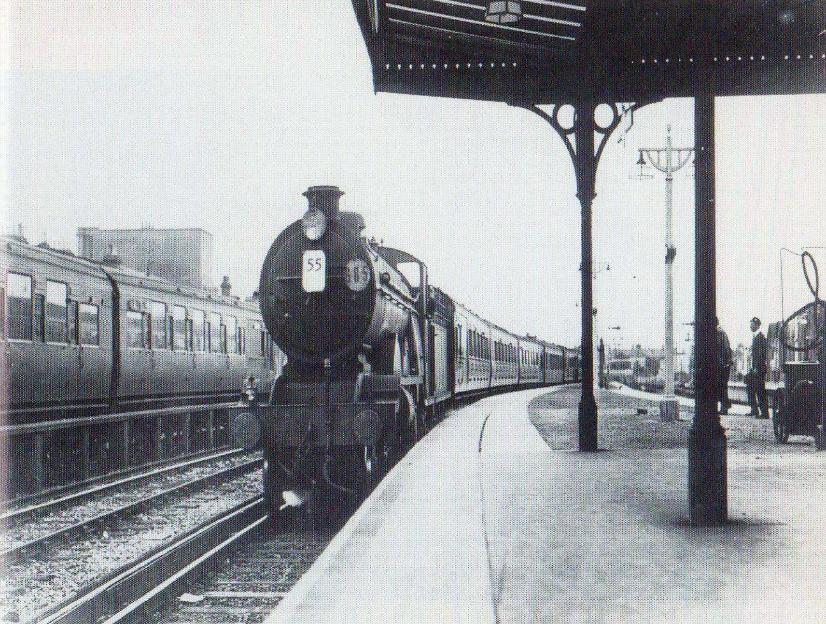
Gerard Young Collection
Driver Joe Miller brings in the last regular steam hauled passenger train from Victoria on Saturday 2nd July 1938. The first electric train the next day received a civic reception, but the engine drivers at Bognor were not so happy and hung an effigy on the locomotive shed doors with a card round it’s neck say
“TO ALL LOCOMEN - R.I.P.”
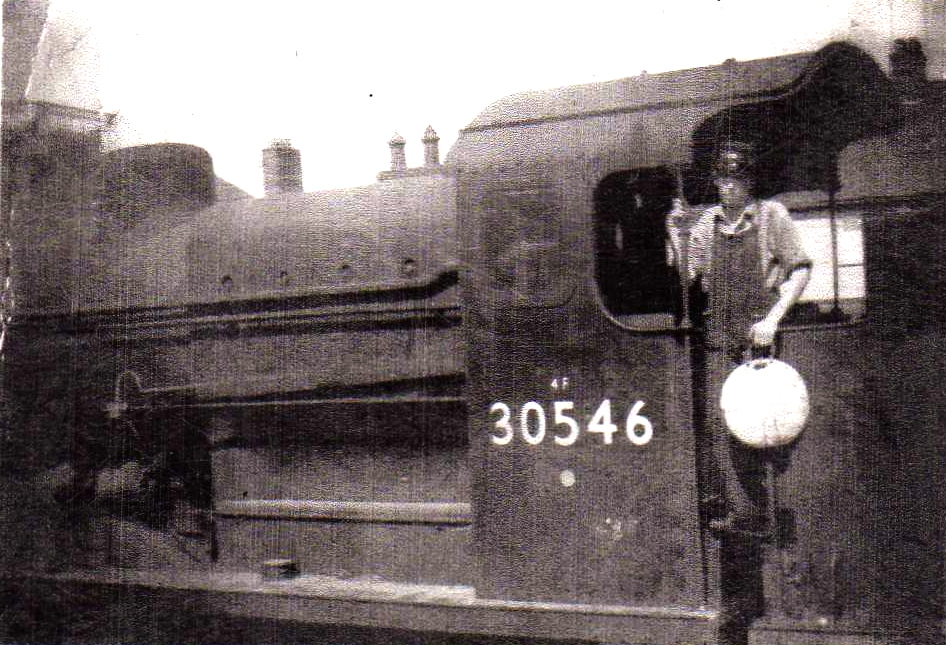
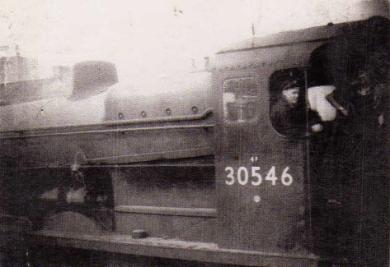
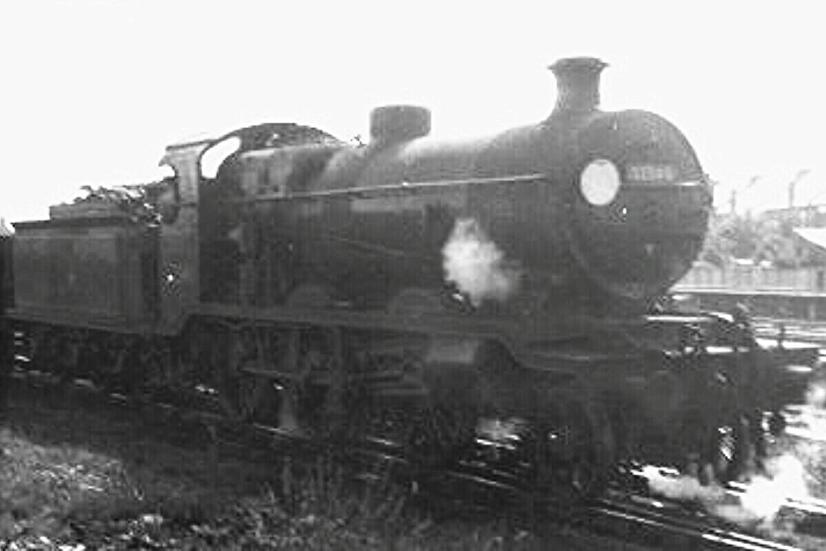
PHOTOGRAPHER UNKNOWN
LOCOMOTIVE JOURNAL
OCTOBER 1950
BOGNOR BRANCH
Presentations to retiring Bognor regis railwaymen were made at a Smoking Concerty and Party at "The White
Horse," Bognor Regis, on Friday March 24 1950, organised jointly by N.U.R., Railway sports club, A.S.L.E. & F.
On behalf of the Staff and N.U.R. Mr. Frank Rutter (Station Master) presented retirement cheques to Mrs. Harfield
(Carriage Cleaner) and Bro. Pilcher (Stores issuer, Loco).
Mr. Cleaver (Organiser, A.S.L.E. & F.) gave a very interesting speech which was greatly appreciated by all present -
also his remarks to retired members and their wives when making presentations of cheques to Bros. W. Hellyer, E.
Pursley and J. Tribe and bouquets to retiring members wives.
Mr. E. Steel (Chairman, A.S.L.E. & F.) presided.
Entertainment was given by Miss Bailey (Soprano), Mr. Chapman (Tenor), Mr. V. Smith (Tenor), Mr. Baldwin (Tenor),
Mr Volkes (Accordionist), Mr. Swift (Accomanpist), and Mr. King (Piano).
A grand evening came to an end at 11 p.m. with a very hearty vote of thanks to the organisers.
G.E. Freeman,
Vice Chairman.
1955 A.S.L.E.F STRIKE
Bognor & Littlehampton branch members
Photo taken outside Littlehampton Railway Station, back of the Co-Op in Albert Road.
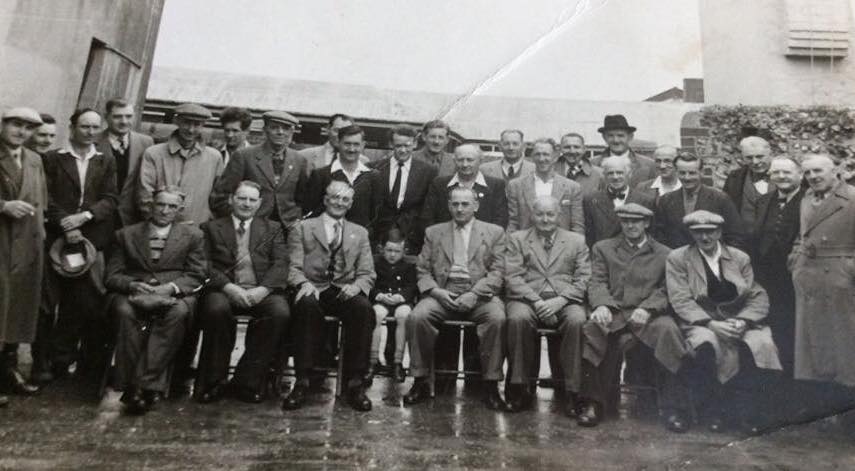
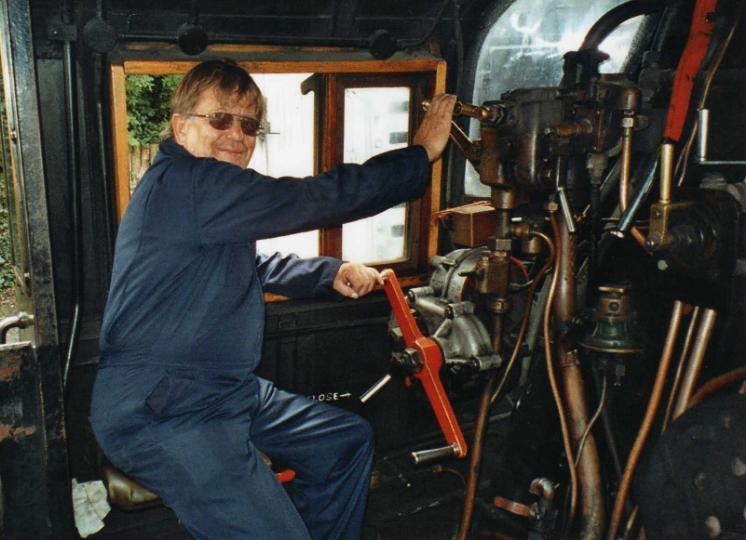
TONY SQUIRES COLLECTION
TONY SQUIRES
Tony started at Horsham as a Engine Cleaner on the 20th January 1957 and was promoted to Fireman on the 8th
February 1960 and later transferring to Bognor on the 19th September 1960.
With the closure of Bognor Loco, Tony transferred to Brighton Loco on the 9th November 1962, and later moving
back to Horsham Loco on 17th December 1962.
With the closure of Horsham Loco in June 1964, Tony transferred to Three Bridges Loco on the 15th June 1964.
Tony's final move was on the 2nd November 1964 moving to Epsom E.M.U.T. Depot for his driver's job, and later
leaving the railway on the 17th July 1965.
In November 1974, rejoined the railway at Littlehamton, in the traffic department and worked his way through the
traffic grades and retiring as a Guard at Barnham.
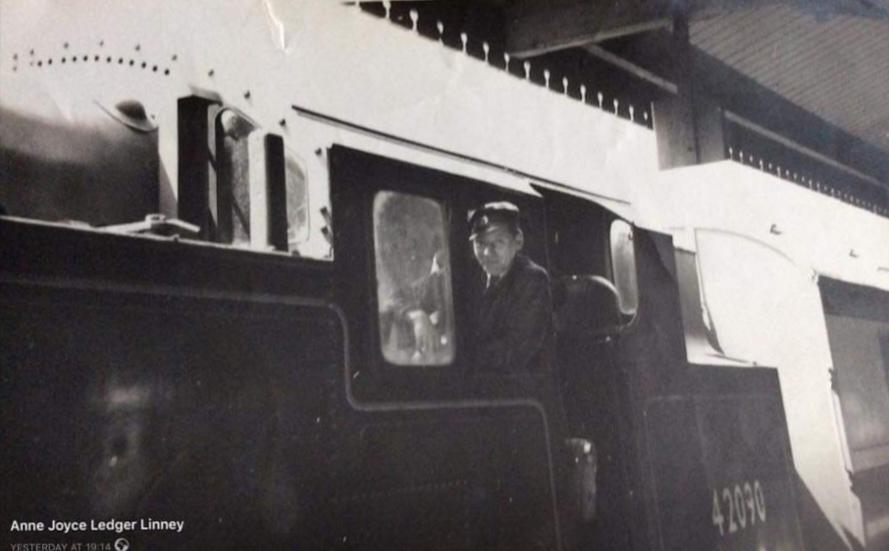
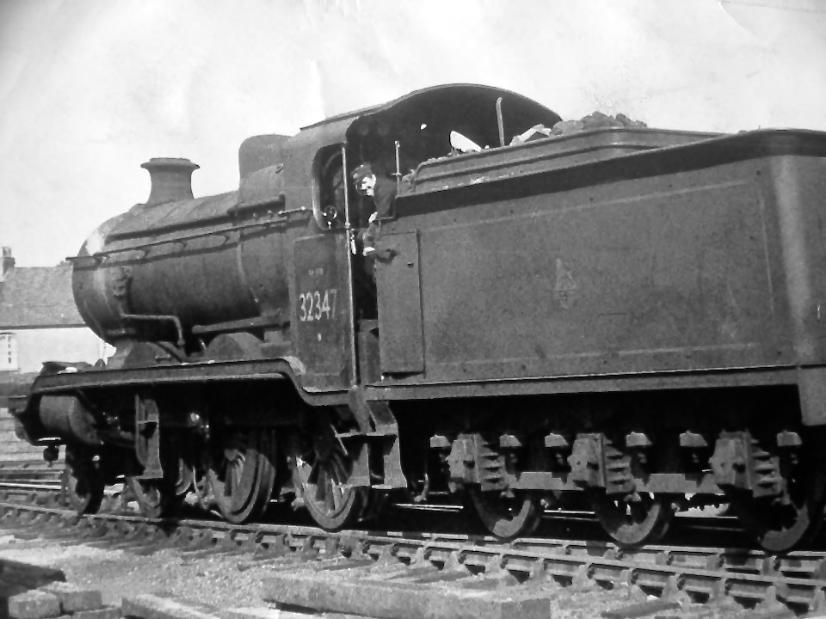
TODD SLAUGHTER COLLECTION
Robert “Todd” Slaughter
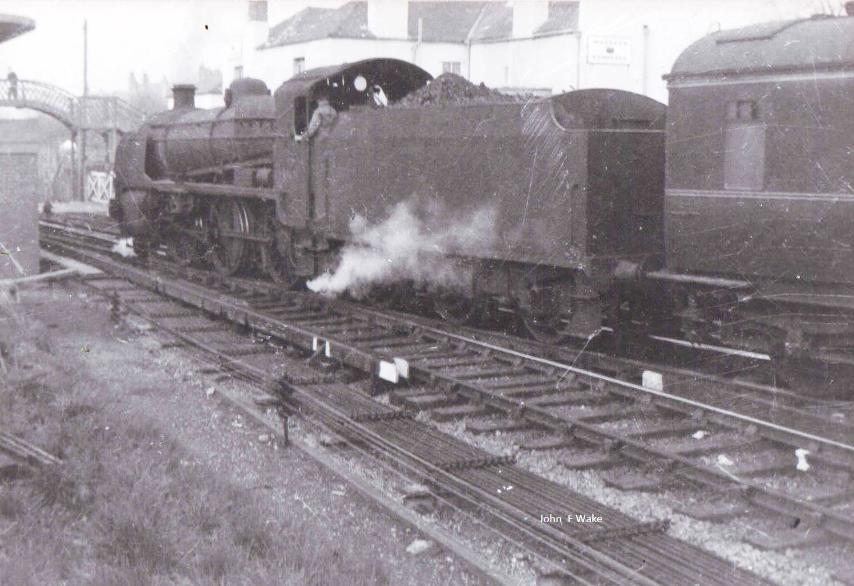
STORIES FROM THE SHOVEL
Two firemen Graham White and George Howes who were formerly of Bognor Locomotive Shed.
Graham and George both joined within months of each other in the early 1940. At this time Bognor was still a
sizable engine shed under the rule of the Running Loco Foreman, a Jack Tribe, whose characteristics including a
large moustache and a penchant for smoking a vile herbal tobacco. Twenty – two sets of men worked from Bognor
shed which provided motive power for goods trains, including the Chichester to Midhurst goods turn.
Both men started as engine cleaners but a shortage of manpower meant that spare fireman were allocated to a
firing duty as required, and the following day reverted to engine cleaning duties. The cleaning shifts were 6 a.m. to
2 p.m. and 2 p.m. to 10 p.m. Even though Graham and George had fired engines on the line they were not allowed
into the Driver’s and Firemen’s’ Lobby. To again admittance, a cleaner had to become a Passed Fireman. That was
achieved once he had completed the requisite number of 313 firing duties. In the meantime, to emphasise their
exclusion, a detonator was dropped down the chimney of the Lobby and loud explosion ensued!
The requirement for a Passed Cleaner to complete 313 firing turns to qualify as a Passed Fireman had remained
the same since the days of the L.B.S.C.R. Before 1923 it could take several years to notch up the required turns.
There was no shortage of manpower and young men remained cleaners for years before firing an engine on the
line.
Extracted from the book
Going of the rails
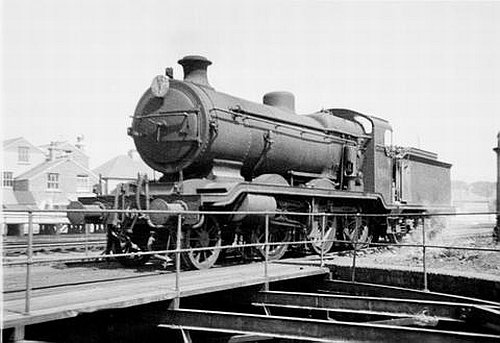
PHOTOGRAPHER UNKNOWN
K class on Bognor turntable 27th May 1950
The “Midhurst Turn”
Enginemen working from Bognor looked forward to the “Midhurst Turn”, not least because the booking on time
was 8:30 a.m. rather than the usual 3:30 a.m.! The duty was looked upon as a week’s holiday. It started each day
by taking a light engine – frequently a “Vulcan”, one of the old L.B.S.C.R.’s 0-6-0 tender engines of class “C2x” –
to Chichester, where it waited for 15 minutes.
During World War II Chichester had an extensive marshalling yard at which additional sidings had been installed
for wartime traffic. Also there was a triangle for turning engines. The site is occupied now by the Westgate Leisure
Centre. After a quick cup of tea the crew would back the engines on to the goods train for Midhurst which usually
comprised box vans with supplies for the village shops, and wagons – some full, others empty for coal yards at
Lavant and Singleton.
On obtaining the right of way from the yard the train set out, and the signalman in Fishbourne Crossing signal box
would be ready, holding out the staff for the fireman to grab as they passed, whereupon the train had a clear path
up the line. The climb out of Chichester to the first station of Lavant was on a gradient of 1 in 75 and on the
journey care had to be taken, especially with heavy beet trains. In the days when goods trains did not have
continuous brakes there were always fears that the wagons might overpower an engine on down grades. George
Howes recalled how one driver misjudged his approach and smashed into the Fishbourne Crossing gates which
had only been repaired the previous day. The driver had such a fright as thought he might hit a bus on the crossing:
he lost all his hair after the accident and it never grew back.
Graham White used to get Freddie Gun, the coalman at
Bognor shed, to throw up some extra coal when he was
refuelling the engine. As they proceeded past the troops
he used to throw out large lumps of coal which the
soldiers would retrieve for use in the stoves of their
field kitchens. In return, they threw all sorts of items
into empty wagons in the train, such as chocolate, tins
of corned beef, tinned soup, dried eggs and Canadian
cigarettes. Such goodies were in short supply to
civilians subject to wartime rationing. At Lavant the
spoils were retrieved from the wagons and shared out
between enginemen and guard.
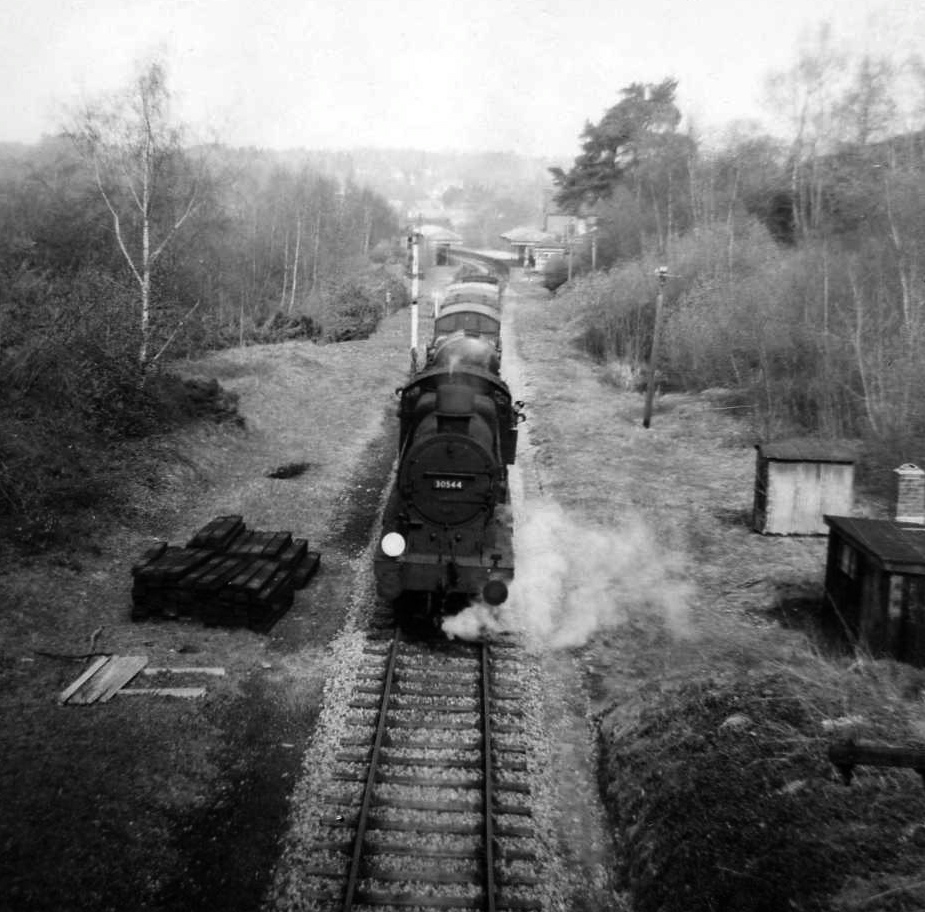
TONY SQUIRES COLLECTION
One of the last trains departing Midhurst Turn.
The American armed forces had a large mess tent on Singleton station and likewise gave the crew food such as
cheese, butter and bacon which was in far from plentiful supply in the local shops. The platelayer would also
present the crew with a rabbit when he had one.
That goes some way to explain why work on the Midhurst the line was so popular: nobody wanted to miss their
turn!
George Howes also found this turn of duty quite profitable for shooting game. In the locality of Singleton station
pheasant were always to be found and the Landlord at the Terminus at Bognor would give him 30/- a brace which
would boost his earnings quite considerably. The modus operandi was that if George bagged two pheasants with
his pistol the driver would slow up. George would then jump off the engine and try to get back: if unable to do so
he would clamber aboard the guard’s brake van. According to George, “I really wanted to get back on the engine
as my mate would load the gun. One day I come away with 18 pheasant.”
This pastime wasn’t a preserve of the footplate crew as Graham White knew of a guard from Littlehampton who
fired a shotgun from his brake van. Graham and the driver used to keep an eye on him, and if he found his target
they wound on the brakes.
Once allied forces had invaded Europe the line was no longer used for storage of wagons of ammunition and once
more trains went through to Midhurst. But the lines attraction for the footplate crews remained. At Christmas time
holly and mistletoe would be collected from the line side for use at home and Christmas trees were readily
available at Cocking.
On arrival at Midhurst at about noon, the train would pull up to the tunnel near the station. The Fireman would
jump off the locomotive and go straight into the porter’s hut where a kettle was always on the boil. Billycans were
filled and, as the engine chugged back into the goods yard, the fireman would climb aboard the engine. Driver and
Fireman would have their meal before shunting the yard. If not much shunting indicated, the crew would stroll
down the town, leaving the engine to simmer on its own.
On a normal rostered turn the train would make its way to Petworth. Out of Petworth was uphill and the crew
would have an n unpleasant time when the engine was working hard with steam and smoke filling the cab. In
winter, the crew wouldn’t risk putting their heads out of the cab as icicles might be hanging down from the roof of
Midhurst Tunnel. Quite thick at the top, the icicles tapered down, and frequently almost touched the ground.
While passing through Midhurst Tunnel, driver and fireman would their breath hoping that the engine would give
them little trouble so that their ordeal would be over as soon as possible. It would help if the locomotive was being
fired properly and emitting the minimum of smoke. Just after the war George Howes recalled that “smoke-jacks”
were out and about, intent on keeping their eye on engines coming up the line, and ready to file a report if they
thought that too much smoke was being emitted.
On to Selham where the normal routine would take place of trucks being delivered and coupled up. From here
loads of chestnut fencing was sent out to Petworth with a passenger service still in operation strict timekeeping had
to be observed on this part of the line.
Petworth was the end of the turn for the Bognor crew. They would go to the signal box situated on the bank to make
a cup of tea, or on very hot days the local pub would be visited. First the yard had to be shunted, the train
marshalled, and the locomotive ready for the relief crew. Coal was moved forward in the tender, and the engine
oiled round for the Horsham men who worked the train from Pulborough to Petersfield. Then the Bognor crew
travelled home “passenger,” first on the motor train to Pulborough and then by electric service to Bognor Regis.
For railwaymen, a journey home by passenger train in this way was said to be “on the cushions.”
The Chichester to Midhurst turn ceased quite abruptly for Bognor men in 1951, when the engine of the Midhurst
goods train met with disaster when a stretch of railway line between Singleton and Midhurst had been washed
away. The decision was taken that it was uneconomic to restore the line and thereafter the Chichester to Midhurst
goods service ceased.
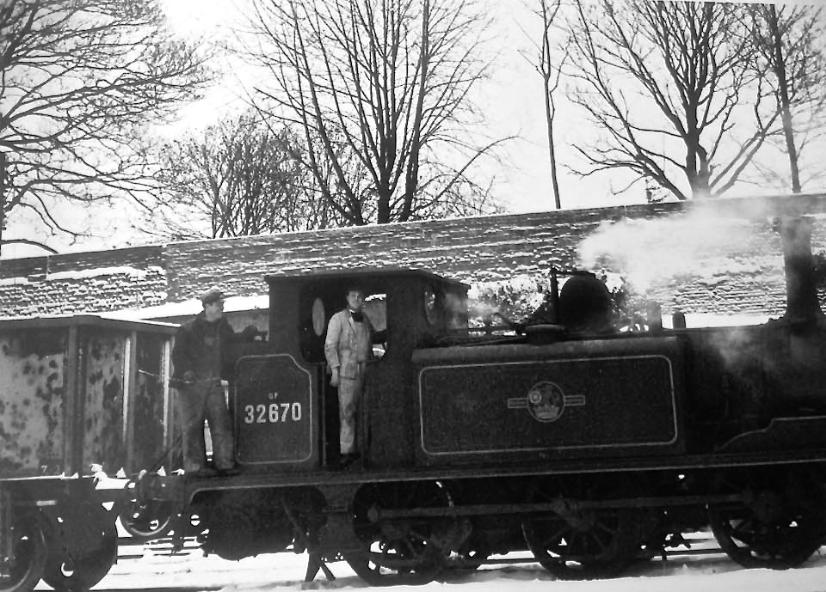
TODD SLAUGHTER COLLECTION
Left - Right Fireman Fred Maskell & Driver Robert “Todd” Slaughter
The last trip on the
“Midhurst Turn”
The daily goods service between Chichester and Midhurst
ceased abruptly in 1951. Bognor passed fireman George Howes has good reason to remember the event on Monday, 19th
November 1951, he and his driver, Fergus (Fred) bunker, left
Bognor with a locomotive for Chichester to pick up the daily
goods train for the trip up to Midhurst.
The weather was typical for November in 1951, quite different
from today. In the 1950s and early 1960s there would be days,
even weeks, during the autumn when it would rain and rain day
in, week out. It had been pouring with rain all weekend and was
still wet when the crew couple the locomotive to the wagons and
pick up the staff at Fishbourne signal box on the start of the
journey up the line. On such days, extra unofficial activities such
as game shooting were not considered. The main aim was to
keep dry. The normal routine of dropping off and pick wagons at
Lavant and Singleton was carried out and now came the journey
to Midhurst.
The downhill approach round into Midhurst was on a horseshoe
shaped curve and the station could be seen through the trees.
George Howes just happened to be on the driver’s side of the
engine when he looked down. In his own words, “I’d never seen
so much water down there - it was like a river.” He crossed back
to the fireman’s side of the engine but as they were on a curve he
couldn’t see anything. On his return to his mate’s side he took
another look, saw that there was no bank supporting the rails
and jumped, followed by his driver. “We both jumped off the
wrong side, but luckily enough of the trucks stayed on the track
otherwise they might have come over on us.”
The engine carried on until the track collapsed under its weight
and buried its smokebox in the mud at the bottom of the gully.
The tender shot straight up in the air and filled the cab with
coal. Subsequently this caught fire and in turn set alight the
anthracite coal from the crushed wagon behind the tender.
George Howes had landed on level ground and was unhurt but
Fred bunker had dropped down the bank, got wet up to his knees
and had to hobble up from the bottom. George recalled “It was
still very cold and not very nice and we were lucky we got off. If
we’d stayed we would both been killed.” The engine had a full
head of steam and we were frightened that if it dropped into
deeper water then it would have exploded”. The guard, Albert
Betterton of Littlehampton also jumped clear and was unhurt.
Both driver and fireman walked back up the line to be met by a
policeman riding a bike between the track. At the Greyhound
public house the signalman was telephoned and notified of the
PHOTOGRAPHER UNKNOWN
PHOTOGRAPHER UNKNOWN
PHOTOGRAPHER UNKNOWN
were approaching the station two ladies accosted them and complained bitterly of the noise and the damp, steamy
mist. Midhurst and Petworth Fire Brigade turned out in full force and Midhurst Ambulance stood by as there was a
distinct possibility of the locomotive exploding.
On arrival at the station the crew were soon besieged by reporters, but the crew could not say anything until the
matter had been reported to the Railway Inspectorate.The event made local news and the crew had a lucky escape
which is personified in the late Fred Bunker as recalled by his fireman “If we’d been killed I would never had my first
Christmas with my baby.” Fred had just become a father and it is a reminder that railway work had its dangers in
which other unfortunate railwaymen paid with their lives.
It seems that the culvert running underneath the bank had been unable to cope with the water which in turn had
pushed the bank away. The aftermath of this event was that the coal surrounding the engine kept burning for a couple
of weeks. Attempts to recover the engine using a crane failed as every time the crane approached the scene the bank
gave way. Eventually, the locomotive was extracted by removing the embankment for several hundred yards and
laying a length of track along which the engine, former L.B.S.C.R. Class C2x No. 32522 was winched out.
The engine was sent for repair at Brighton in February 1952. George, who subsequently fired on No. 3522, thought it
was better than before it had been put down the gully!
Extracted from the book
Going of the rails
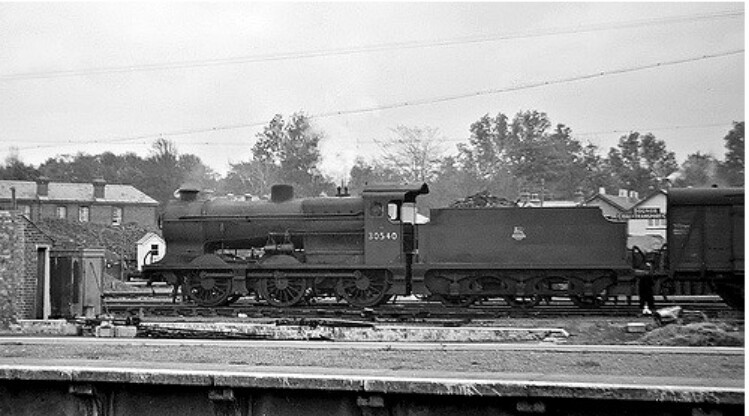
PHOTOGRAPHER UNKNOWN
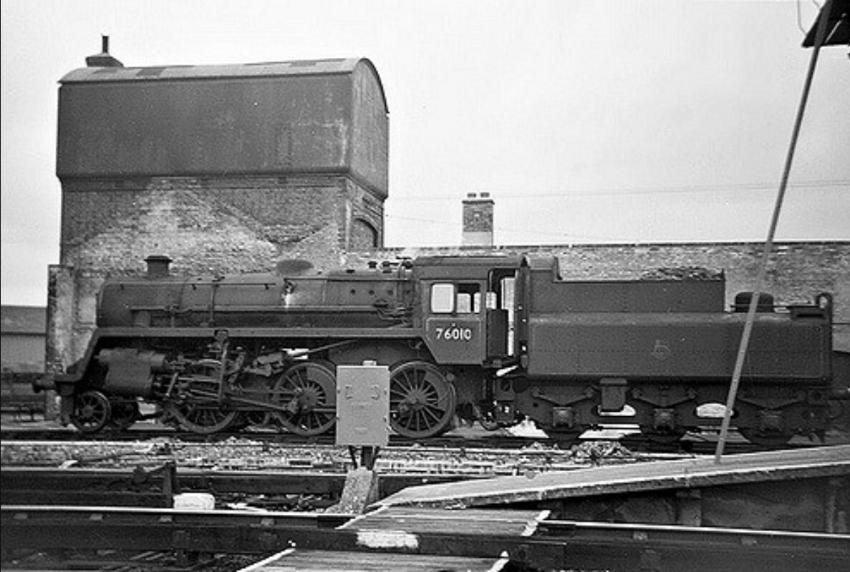
PHOTOGRAPHER UNKNOWN
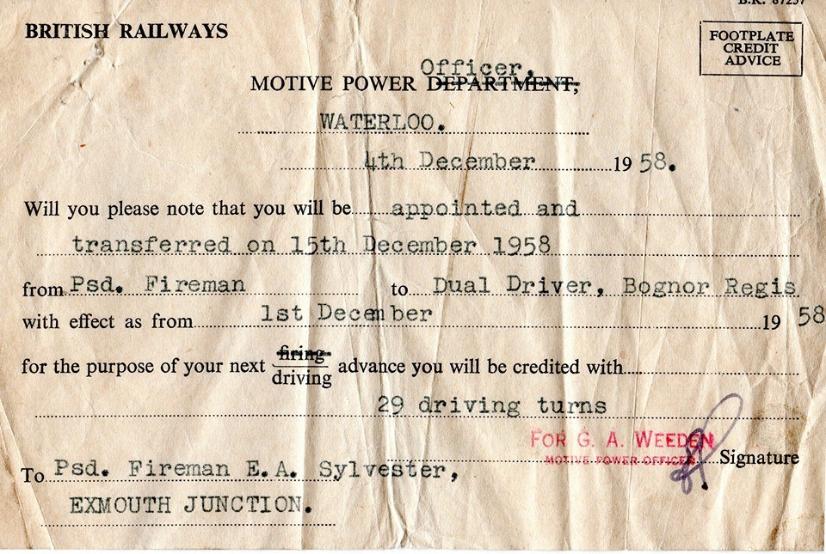
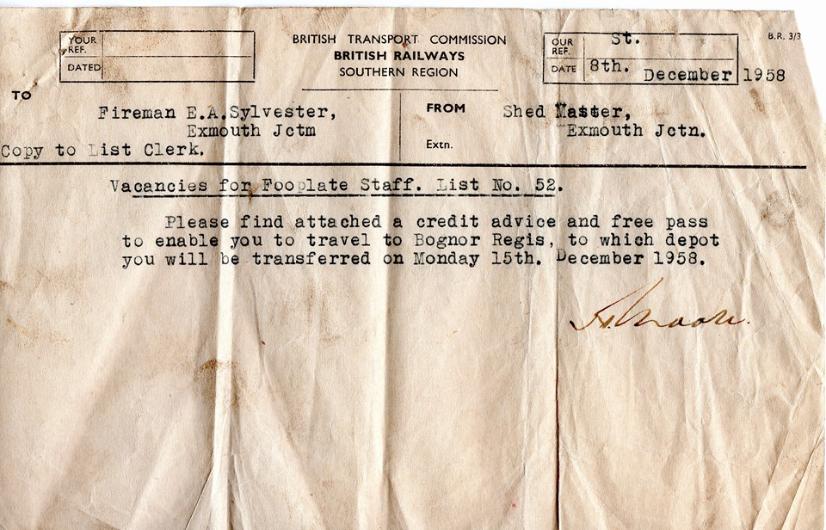
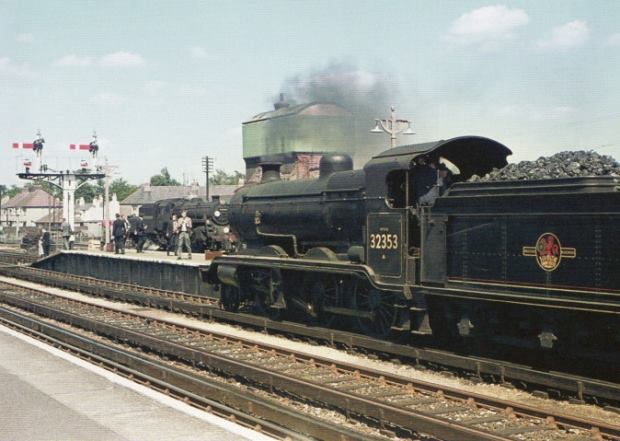
PHOTOGRAPHER UNKNOWN
THE SUSSEX MOTIVE POWER DEPOTS WEBSITE.
HAS NOW BEEN MOVED TO A NEW SITE CALLED
IGNITING THE FLAMING OF UNITY
PLEASE CLICK ON THE IMAGE BELOW
TO TRANSFER TO THIS NEW SITE
CLICK ON THE ABOVE IMAGE TO TAKE YOU
TO THE NEW UPDATED COMBINED AND WEBSITE
IGNITING THE FLAME OF UNITY WEBSITE
https://ignitingtheflameofunity.yolasite.com/
THIS WEBSITE COMBINES THE FOLLOWING WEBSITES
THE BRIGHTON A.S.L.E.&F., THE BRIGHTON MOTIVE POWER DEPOTS
& THE SUSSEX MOTIVE POWER WEBSITES
WHICH EXPLAINS THE EVOLUTION OF THE FOOTPLATE GRADES AND THE
HISTORY OF THEIR TRADE UNIONS AND THE STRUGGLES TO IMPROVE
THEIR WORKING LIVES

